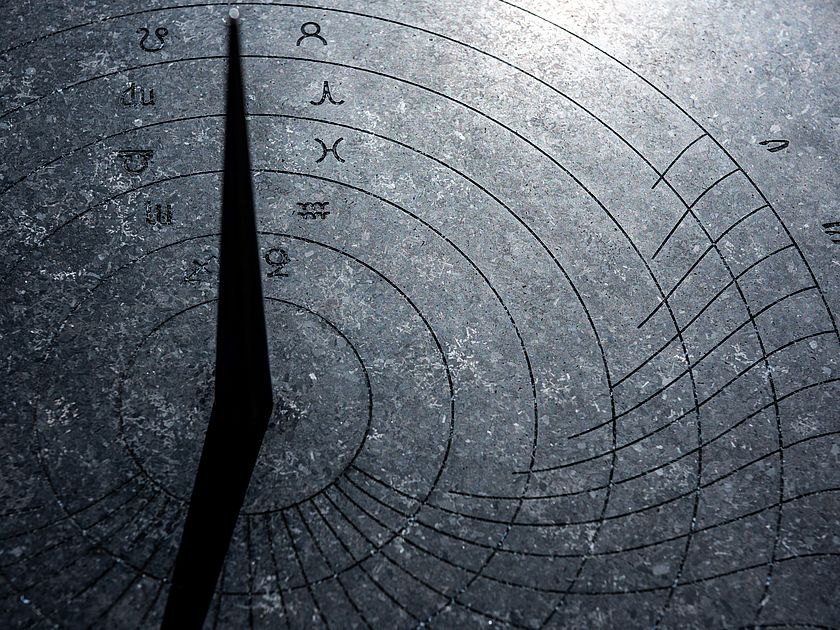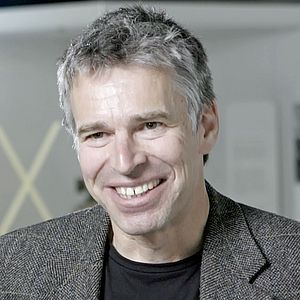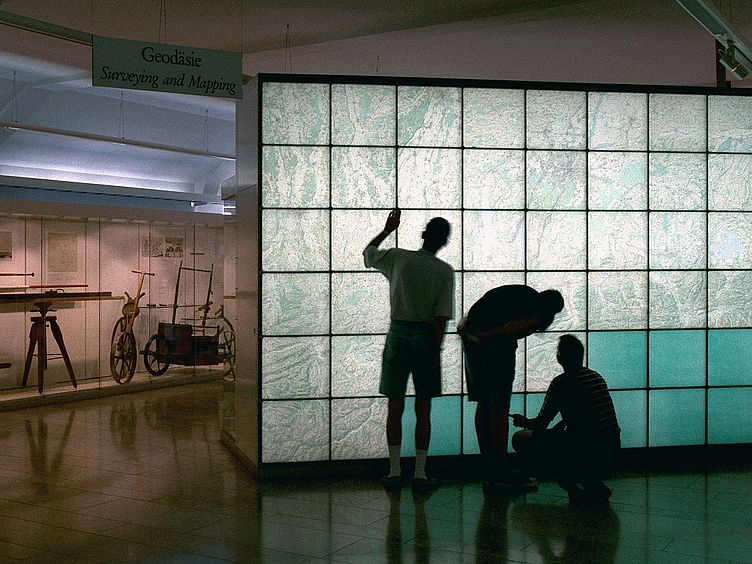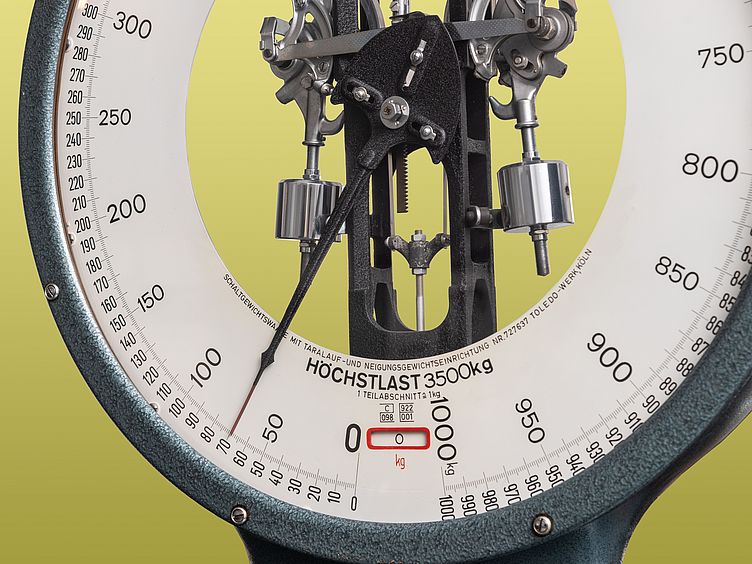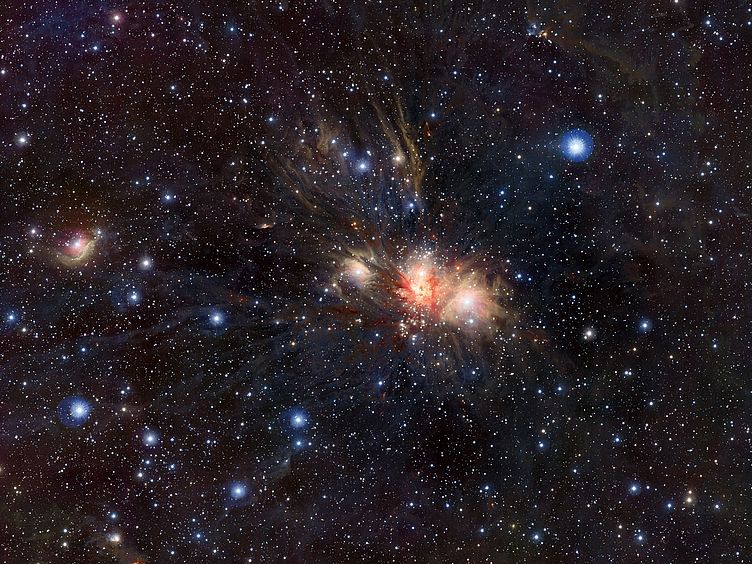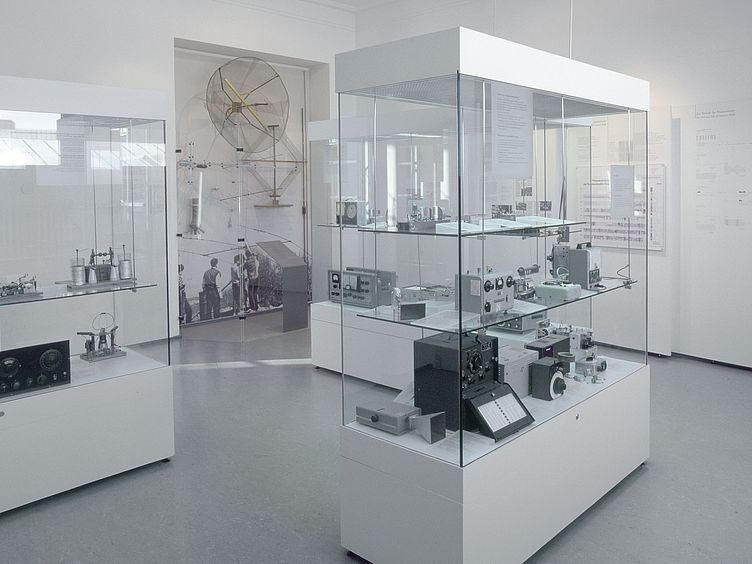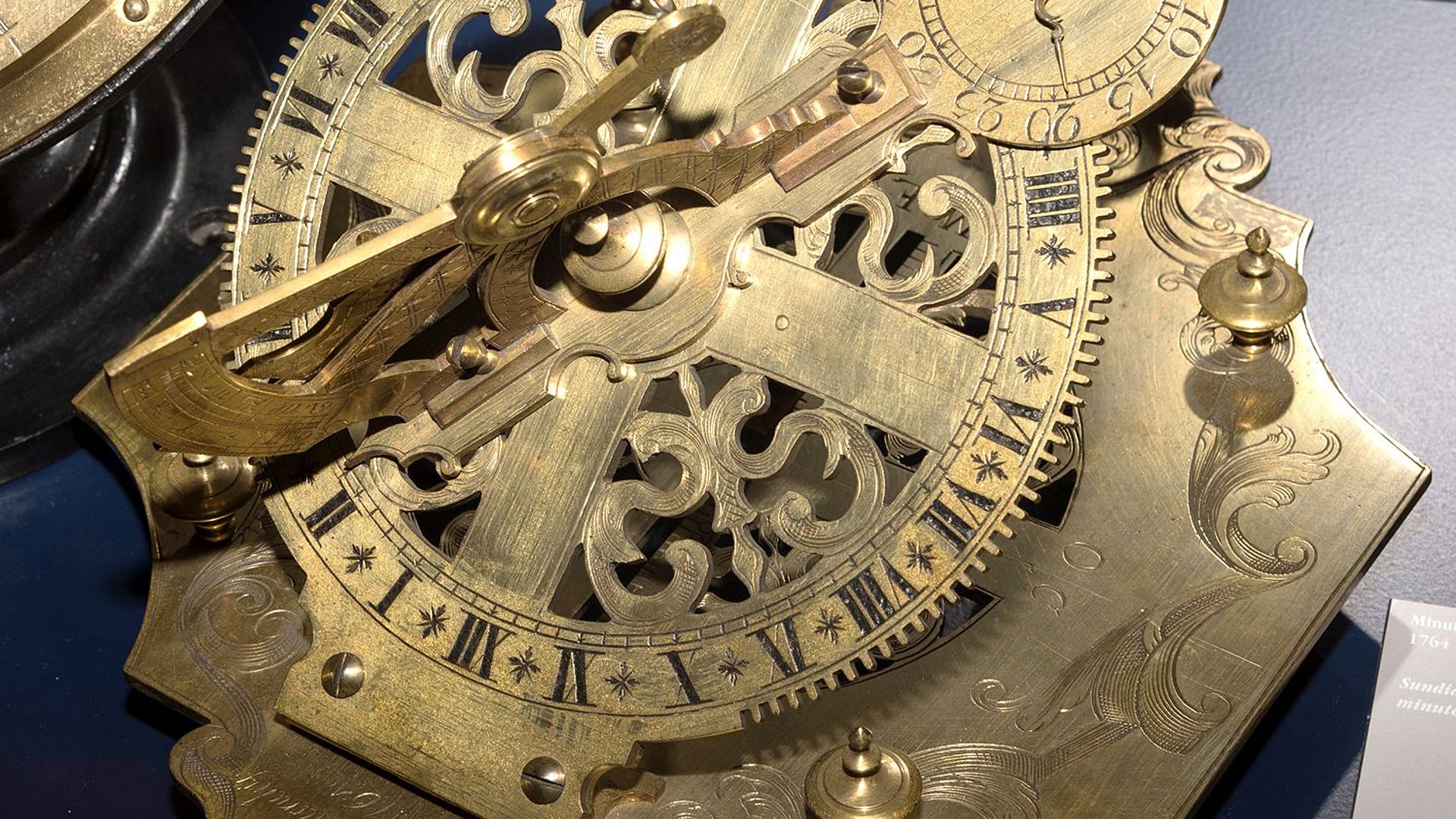
Photo: Deutsches Museum | Christian Illing
Man and Environment
Chronometry – From the Big Bang to the nanosecond
From the very earliest methods for measuring time such as water clocks and hourglasses to cutting-edge examples of the art of clock-making, the story of time is told here.
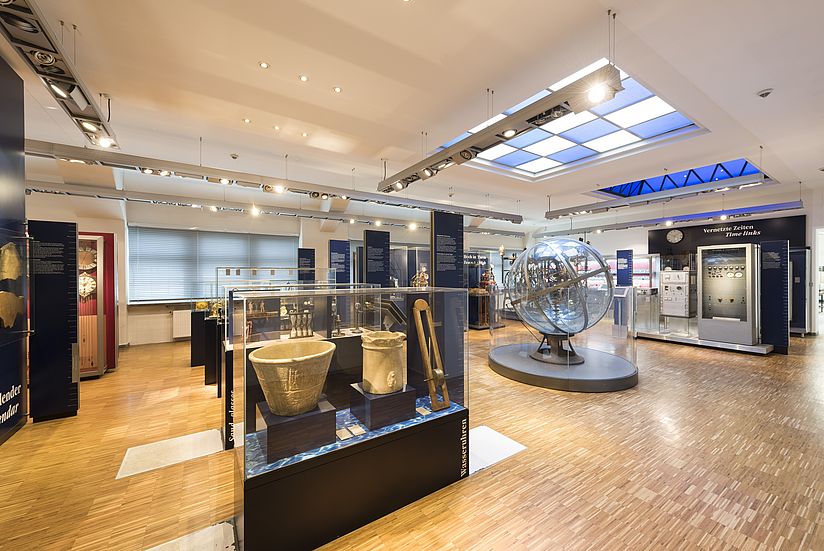
View inside the Chronometry exhibition. Photo: Deutsches Museum | Christian Illing
What is time?
The question of what time actually is and whether it exists at all has not yet been conclusively answered. Nevertheless, dealing with time in our everyday lives, in sport, in technology and in many areas of the natural sciences is a matter of course and seems completely straightforward. In most cases, the measurement of time appears to be a clear task that can easily be performed with a watch. Problems apparently only emerge when we think more deeply about the phenomenon of time.
“What then is time? If no one asks me, I know what it is. If I wish to explain it to him who asks, I do not know.”
The exhibition gives an insight into the variety of clocks that have been created over the centuries. Different functional principles have supplanted one another, always with the goal of measuring regular natural processes accurately. For example the sundial, whose time display is directly dependent on the apparent movement of the star that is at the centre of our solar system. The pulse generators in clocks have changed over time, becoming increasingly accurate. Starting with the pendulum and the coil spring, we now rely on the oscillation of quartz or the measurement of microwaves that are emitted by atoms.
“What really matters anyway is not how we define time, but how we measure it.”
Inside the chronometry exhibition
Virtual Tour
Discover the exhibition in 360°: click the mouse or touch the screen to look around in any direction. The virtual tour also includes text, films and audio information for many of the exhibits.
Virtual Tour through the Chronometry Exhibition
Facts
- 220m² exhibition area
- The exhibition is on Level 3.
Any questions?
![]()
Dr. Christian Sicka
Curator
Abteilung Astronomie, Planetarium, Atomphysik, ZeitmessungDeutsches Museum
80306 MunichTelephone +49 89 2179 350
Fax +49 89 2179 99350
Email c.sicka@deutsches-museum.de
Do you have organizational questions?
Cornelia Schubert
Assistance to department heads, main department heads and curators
Susanne Schmölz
Assistance to department heads, main department heads and curators

